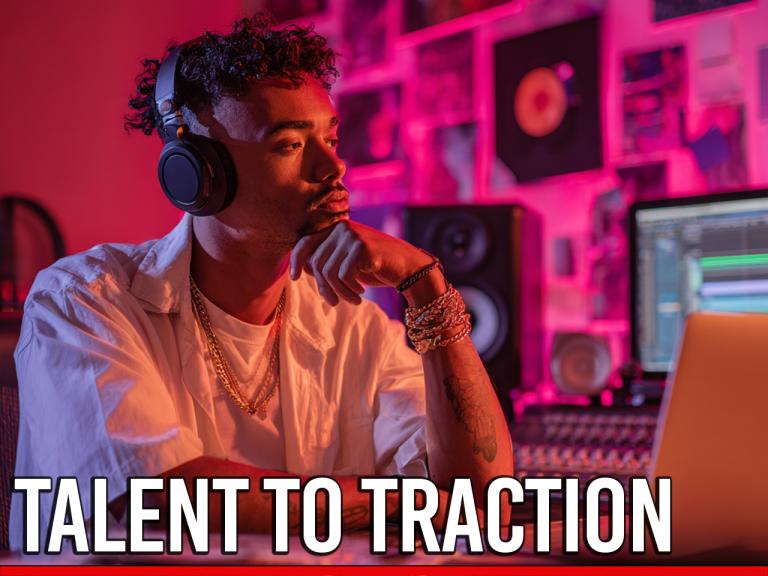
Think releasing good music is enough? Think again. Too many talented artists get overlooked because they skip the most important steps. Before you drop your next track, find out what really separates successful artists from everyone else. The difference might surprise you.
From Talent to Traction: How to Build a Serious Music Career Without Cutting Corners
The music industry continues to evolve at a rapid pace, and for independent artists, it can feel like a maze of options, obstacles, and information overload. While the idea of just releasing music may sound like enough, true success requires a clear strategy, professional guidance, and consistent execution. It is no longer enough to simply be talented. Today, artists must also be intentional about how they develop, present, and promote their music if they want to stand out. This article is designed to walk independent artists through the essential stages of development and provide clarity on what it takes to create a real lasting career in music. Whether you are a songwriter, vocalist, or multi-talented creative, the process starts with a solid foundation rooted in your passion, your story, and a professional presentation.
Why Artist Development Still Matters
Artist development is the bedrock of every lasting music career. It is not a step you can afford to skip or outsource halfway. It is the process that turns a hobby into a brand, a demo into a professional release, and an idea into a career path. Development is not just about rehearsing your vocals or picking the right beat. It is a comprehensive process that covers how you are perceived by the public, the quality of your content, the professionalism of your presentation, and the clarity of your message. A well-developed artist has a compelling story, a distinct sound, a polished image, and an infrastructure behind them that allows them to grow. Without development, even the best songs may never be heard, or worse, may be heard but not taken seriously. For emerging artists, development is not a luxury. It is the gateway to every meaningful opportunity that follows.
Why You Should Build a Brand Around Yourself First
Many artists begin their careers hoping that someone else will notice their music and run with it. They wait for a more established artist to license their songs or for a label to come calling. But one of the most powerful and effective things you can do is build a brand around yourself. You are the most authentic representative of your music. When you are the voice behind your songs, you control the narrative, the message, and the emotional connection with the audience. Developing your brand does not mean faking an image. It means owning your truth, being consistent with your visuals and message, and allowing people to associate a specific experience with your name. When fans begin to recognize your style, your voice, and your energy, you create an ecosystem around your music. This makes it easier to grow a loyal fan base, get booked for performances, attract partnerships, and eventually license your music in ways that benefit you both artistically and financially.
The Foundation for a Successful Launch
Every successful music release starts long before the song drops. It begins with preparation and a strong foundation. This includes professional photography that visually defines your brand and introduces you to your audience in a powerful way. Your look should match your sound and create a cohesive image that leaves a lasting impression. Next, you need graphics for your single or album cover, social media, and promotional materials. High-quality design can elevate your entire brand and help you appear competitive in an industry where visual presentation matters just as much as the music. A mobile-friendly website is essential as your central hub. It should include your bio, music, videos, tour dates, and contact information. A professionally written artist bio and press release are also critical. These tools help journalists, bloggers, and radio professionals understand your story and introduce you to their audiences. Without these materials, you may miss out on press opportunities simply because there was no professional presentation to support your work.
Promotion and Charting: Understanding the Process
Promotion is the engine that drives discovery. If no one knows your music exists, it does not matter how good it is. Promotion includes everything from media outreach and digital radio campaigns to playlist submissions and content marketing. When done properly, it creates momentum, increases awareness, and introduces your music to new listeners. One of the most respected outcomes of effective promotion is chart placement. Charting is a signal to the industry that your music is being purchased, streamed, and played, an indicator of commercial traction. But charting is not automatic. It requires a coordinated campaign built around your music release. This includes strategic planning, timing, and a focused effort to drive visibility and engagement. Chart placement builds credibility and helps shift your reputation from aspiring artist to charting artist, which in turn opens more doors for collaboration, licensing, booking, and media attention. However, charting should not be the end goal. It should be used as a launchpad for continued momentum. Too many artists celebrate a chart position and stop there. The real value is in what happens next and how you build on that success.
Avoiding Common Pitfalls
One of the most common mistakes new artists make is trying to do everything themselves. While independence and hustle are commendable, trying to play the roles of producer, engineer, photographer, designer, web developer, publicist, and marketer usually results in mediocre work, burnout, and frustration. Each of these roles requires years of experience to execute well. When artists take on too much without expertise, their final product often suffers in quality and fails to meet professional standards. Another mistake is paying for promotion or services before having a solid foundation in place. Exposure without infrastructure is ineffective. It leads to wasted resources and missed opportunities. Furthermore, many artists fall victim to companies that offer flashy promises but no substance. These companies deliver little real progress and often leave artists feeling misled. The key is to work with experienced professionals who provide a clear step-by-step plan. A true development partner focuses on your long-term success, not quick fixes or vanity metrics.
Take Time to Learn and Plan
Before rushing into any release or promotional campaign, artists should spend time learning the mechanics of the modern music industry. Education gives you power, direction, and confidence in your decisions. Study artist development blogs, attend consultations, watch videos from reputable professionals, and ask questions. One of the most valuable tools in the early stages is a song review or evaluation. A professional review provides constructive feedback on your song’s marketability, production quality, and commercial potential. It helps you make informed decisions about which songs to promote, how to improve your sound, and where your music fits in the larger market. Taking the time to understand your strengths and weaknesses is not only wise, it is essential. An informed artist is a prepared artist, and preparation is what separates those who build careers from those who fizzle out.
Build with Passion and Purpose
At the core of any lasting artist’s success is passion. Passion fuels creativity, persistence, and growth. But passion alone is not enough. It must be combined with purpose, professionalism, and planning. When your music comes from a real place, when it tells stories that reflect your life and emotions, it naturally resonates with people. Audiences crave authenticity. They connect with songs that make them feel seen, heard, and understood. The most effective way to build a lasting connection with fans is to stay true to your vision while presenting your work in a way that is polished and professional. Consistency is key. Release music regularly. Engage with your audience. Follow up every campaign with another goal. Building a career is not about chasing one big moment. It is about laying brick by brick, developing systems, and growing a business that is rooted in who you are and what you represent.
Final Thoughts
Building a music career in today’s industry is not about luck. It is about intention, execution, and heart. Independent artists now have access to many of the same resources once reserved for major label acts, but having access does not mean you automatically win. It takes strategy, commitment, and collaboration with the right professionals to make your talent stand out. The most important decision you can make is to treat your music like the business it is. Invest in development. Build your brand. Promote with purpose. Stay connected to your audience. And above all, lead with authenticity. Your story, your voice, and your journey are unlike anyone else’s. If you present them with care and consistency, the right people will hear you and the right opportunities will follow.
Written by Dr. Christopher Starr for CSP Music Group
